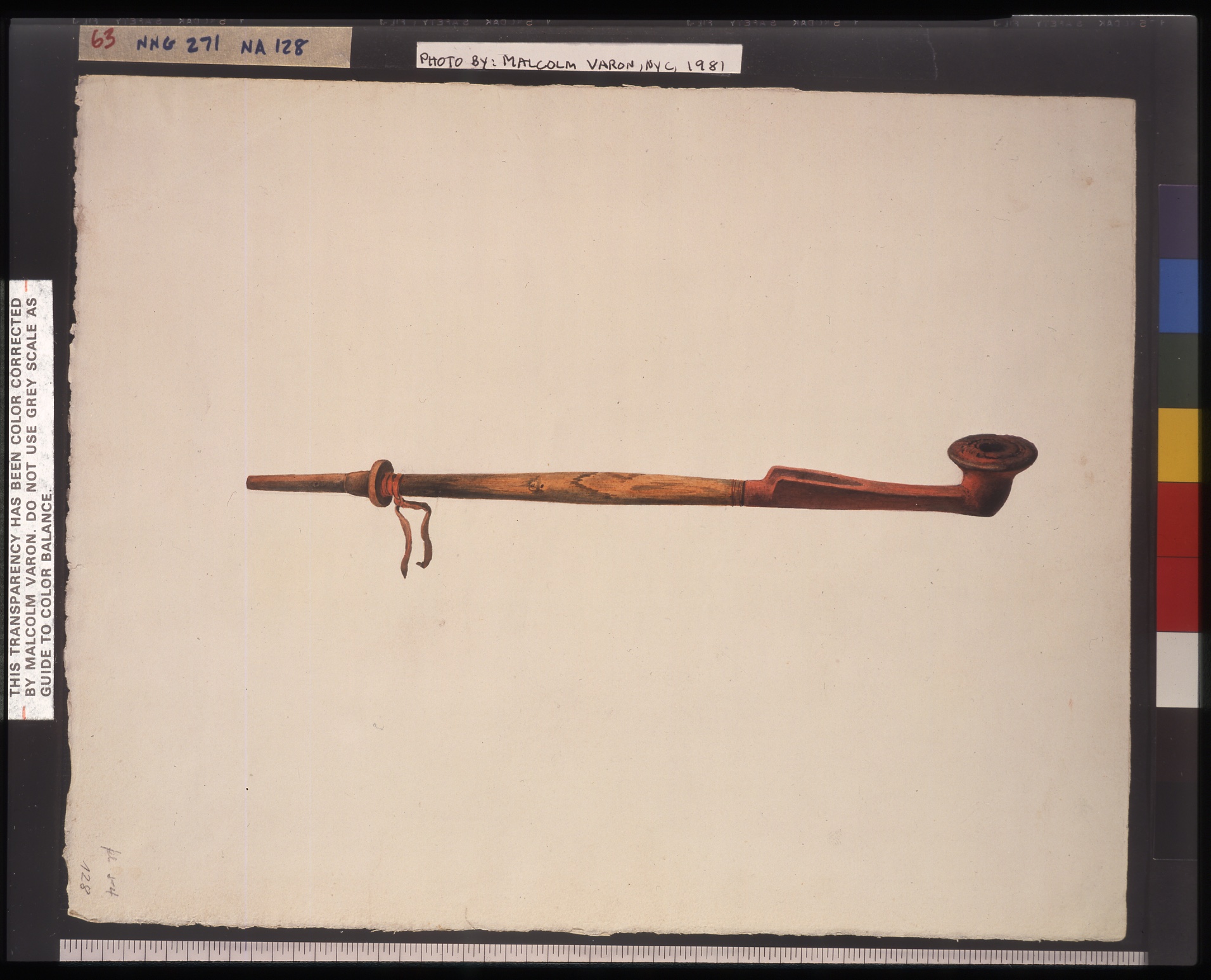Mandan Pipe

Description
Pipes and smoking were associated primarily with men's ritual activities. In speaking of the Mandans, Maximilian remarked that pipes were made of stone, clay, or wood and that many people fashioned their pipes "according to their own taste" to reflect a personal vision or supernatural belief. He cited the pipe of Dip’ÛÎ_uch, illustrated here, as an example. Dip’ÛÎ_uch was a respected man and apparently a religious leader well versed in the myths and sacred traditions of his people. The shape of his pipe was said to represent the Lord of Life in human form. The bowl symbolized the deity's head, the hollow area below his stomach, and the stem the legs and feet. The bowl of this pipe is red clay, and the stem is wood. Dip’ÛÎ_uch used it to consecrate his arrows and invoked its power to protect him from enemy arrows. Dip’ÛÎ_uch's pipe was among several artifacts pictured in Tableau 21 of the published aquatints.
Medium
watercolor on paper
Dimensions
10 x 12 1/2
Call No.
JAM.1986.49.271
Approximate Date of Creation
15th February 1834


